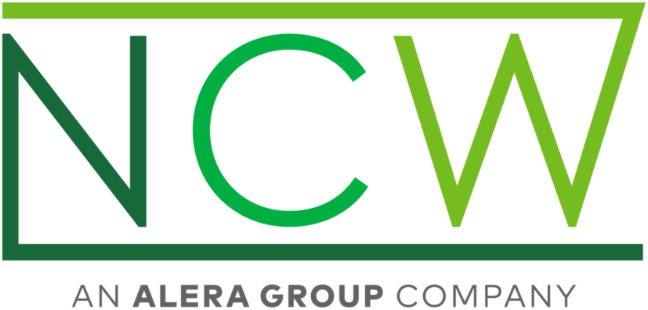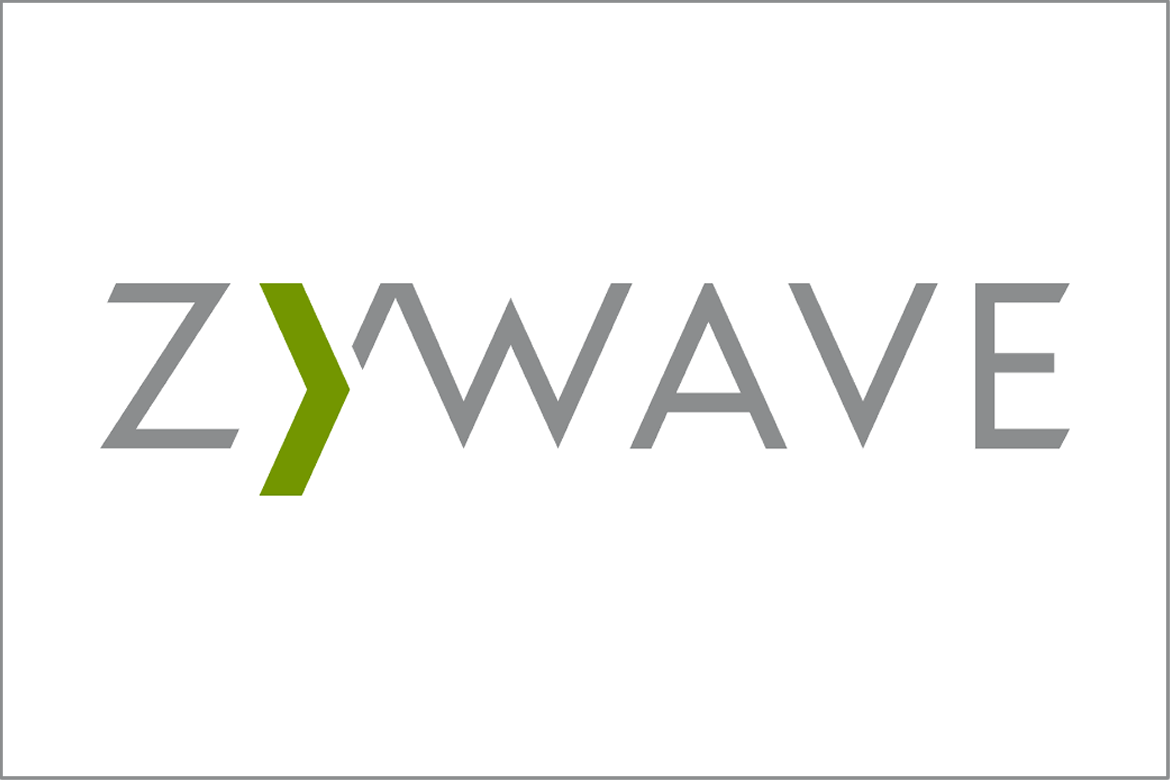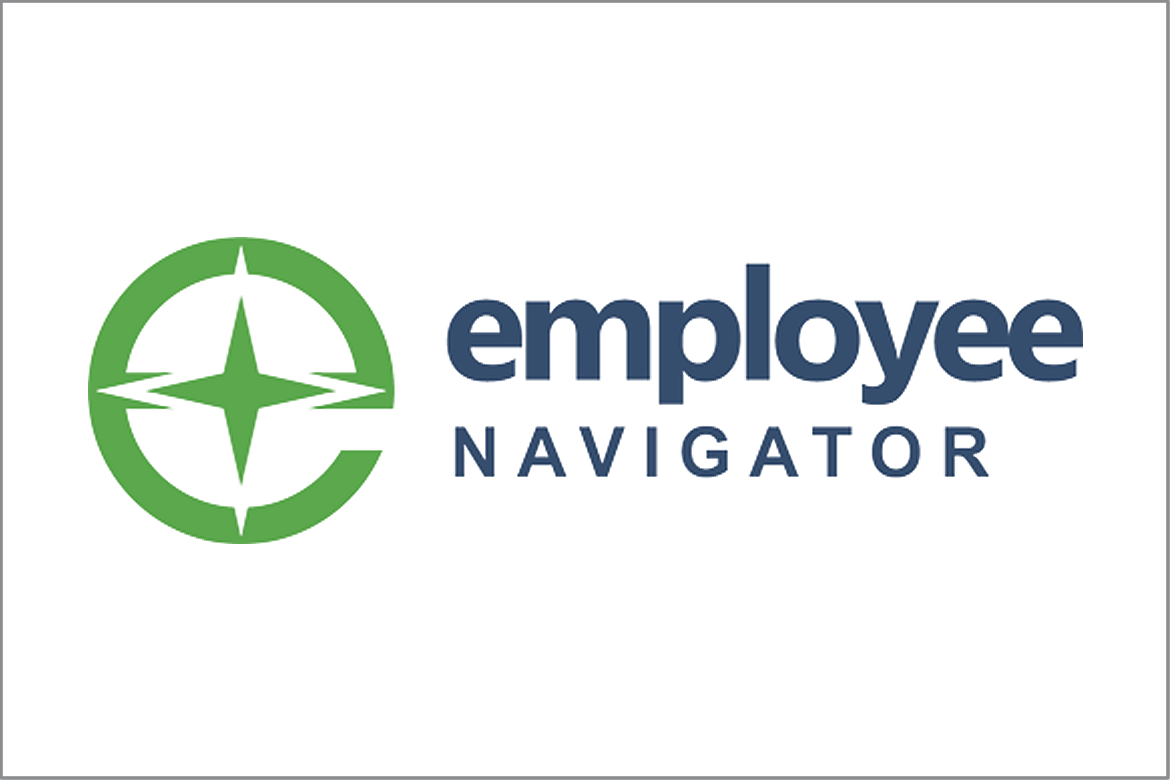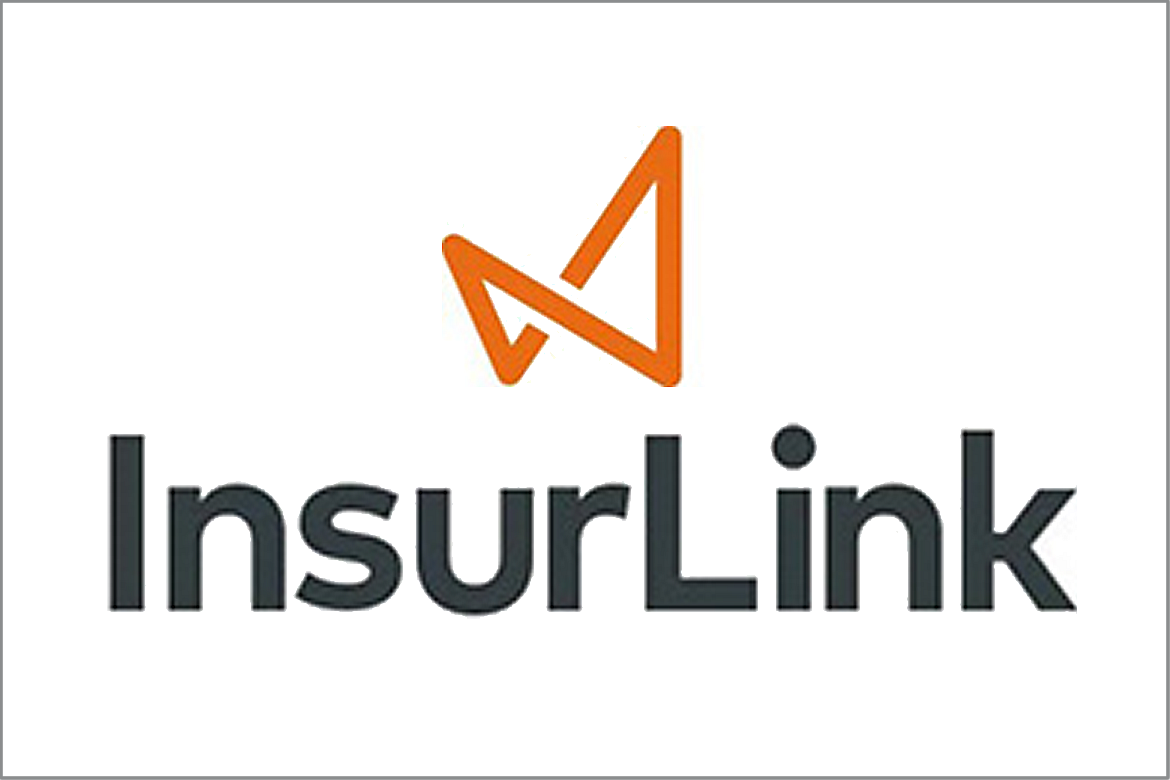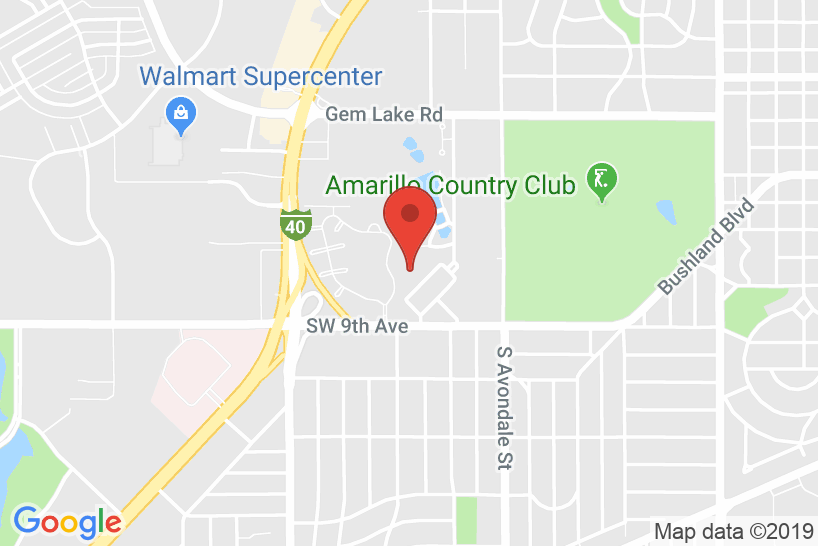Families First Coronavirus Response Act: Questions and Answers
As provided under the legislation, the U.S. Department of Labor will be issuing implementing regulations. Additionally, as warranted, the Department will continue to provide compliance assistance to employers and employees on their responsibilities and rights under the FFCRA.
DEFINITIONS
“Paid sick leave” – means paid leave under the Emergency Paid Sick Leave Act.
“Expanded family and medical leave” – means paid leave under the Emergency Family and Medical Leave Expansion Act.
QUESTIONS & ANSWERS
- What is the effective date of the Families First Coronavirus Response Act (FFCRA), which includes the Emergency Paid Sick Leave Act and the Emergency Family and Medical Leave Expansion Act?
The FFCRA’s paid leave provisions are effective on April 1, 2020, and apply to leave taken between April 1, 2020, and December 31, 2020.
- As an employer, how do I know if my business is under the 500-employee threshold and therefore must provide paid sick leave or expanded family and medical leave?
You have fewer than 500 employees if, at the time your employee’s leave is to be taken, you employ fewer than 500 full-time and part-time employees within the United States, which includes any State of the United States, the District of Columbia, or any Territory or possession of the United States. In making this determination, you should include employees on leave; temporary employees who are jointly employed by you and another employer (regardless of whether the jointly-employed employees are maintained on only your or another employer’s payroll); and day laborers supplied by a temporary agency (regardless of whether you are the temporary agency or the client firm if there is a continuing employment relationship). Workers who are independent contractors under the Fair Labor Standards Act (FLSA), rather than employees, are not considered employees for purposes of the 500-employee threshold.
Typically, a corporation (including its separate establishments or divisions) is considered to be a single employer and its employees must each be counted towards the 500-employee threshold. Where a corporation has an ownership interest in another corporation, the two corporations are separate employers unless they are joint employers under the FLSA with respect to certain employees. If two entities are found to be joint employers, all of their common employees must be counted in determining whether paid sick leave must be provided under the Emergency Paid Sick Leave Act and expanded family and medical leave must be provided under the Emergency Family and Medical Leave Expansion Act.
In general, two or more entities are separate employers unless they meet the integrated employer test under the Family and Medical Leave Act of 1993 (FMLA). If two entities are an integrated employer under the FMLA, then employees of all entities making up the integrated employer will be counted in determining employer coverage for purposes of expanded family and medical leave under the Emergency Family and Medical Leave Expansion Act.
- If I am a private sector employer and have 500 or more employees, do the Acts apply to me?
No. Private sector employers are only required to comply with the Acts if they have fewer than 500 employees.[1]
- If providing child care-related paid sick leave and expanded family and medical leave at my business with fewer than 50 employees would jeopardize the viability of my business as a going concern, how do I take advantage of the small business exemption?
To elect this small business exemption, you should document why your business with fewer than 50 employees meets the criteria set forth by the Department, which will be addressed in more detail in forthcoming regulations.
You should not send any materials to the Department of Labor when seeking a small business exemption for paid sick leave and expanded family and medical leave.
- How do I count hours worked by a part-time employee for purposes of paid sick leave or expanded family and medical leave?A part-time employee is entitled to leave for his or her average number of work hours in a two-week period. Therefore, you calculate hours of leave based on the number of hours the employee is normally scheduled to work. If the normal hours scheduled are unknown, or if the part-time employee’s schedule varies, you may use a six-month average to calculate the average daily hours. Such a part-time employee may take paid sick leave for this number of hours per day for up to a two-week period, and may take expanded family and medical leave for the same number of hours per day up to ten weeks after that.
If this calculation cannot be made because the employee has not been employed for at least six months, use the number of hours that you and your employee agreed that the employee would work upon hiring. And if there is no such agreement, you may calculate the appropriate number of hours of leave based on the average hours per day the employee was scheduled to work over the entire term of his or her employment.
- When calculating pay due to employees, must overtime hours be included?
Yes. The Emergency Family and Medical Leave Expansion Act requires you to pay an employee for hours the employee would have been normally scheduled to work even if that is more than 40 hours in a week.
However, the Emergency Paid Sick Leave Act requires that paid sick leave be paid only up to 80 hours over a two-week period. For example, an employee who is scheduled to work 50 hours a week may take 50 hours of paid sick leave in the first week and 30 hours of paid sick leave in the second week. In any event, the total number of hours paid under the Emergency Paid Sick Leave Act is capped at 80.
If the employee’s schedule varies from week to week, please see the answer to Question 5, because the calculation of hours for a full-time employee with a varying schedule is the same as that for a part-time employee.
Please keep in mind the daily and aggregate caps placed on any pay for paid sick leave and expanded family and medical leave as described in the answer to Question 7.
Please note that pay does not need to include a premium for overtime hours under either the Emergency Paid Sick Leave Act or the Emergency Family and Medical Leave Expansion Act.
- As an employee, how much will I be paid while taking paid sick leave or expanded family and medical leave under the FFCRA?
It depends on your normal schedule as well as why you are taking leave.
If you are taking paid sick leave because you are unable to work or telework due to a need for leave because you (1) are subject to a Federal, State, or local quarantine or isolation order related to COVID-19; (2) have been advised by a health care provider to self-quarantine due to concerns related to COVID-19; or (3) are experiencing symptoms of COVID-19 and are seeking medical diagnosis, you will receive for each applicable hour the greater of:
- your regular rate of pay,
- the federal minimum wage in effect under the FLSA, or
- the applicable State or local minimum wage.
In these circumstances, you are entitled to a maximum of $511 per day, or $5,110 total over the entire paid sick leave period.
If you are taking paid sick leave because you are: (1) caring for an individual who is subject to a Federal, State, or local quarantine or isolation order related to COVID-19 or an individual who has been advised by a health care provider to self-quarantine due to concerns related to COVID-19; (2) caring for your child whose school or place of care is closed, or child care provider is unavailable, due to COVID-19 related reasons; or (3) experiencing any other substantially-similar condition that may arise, as specified by the Secretary of Health and Human Services, you are entitled to compensation at 2/3 of the greater of the amounts above.
Under these circumstances, you are subject to a maximum of $200 per day, or $2,000 over the entire two week period.
If you are taking expanded family and medical leave, you may take paid sick leave for the first ten days of that leave period, or you may substitute any accrued vacation leave, personal leave, or medical or sick leave you have under your employer’s policy. For the following ten weeks, you will be paid for your leave at an amount no less than 2/3 of your regular rate of pay for the hours you would be normally scheduled to work. The regular rate of pay used to calculate this amount must be at or above the federal minimum wage, or the applicable state or local minimum wage. However, you will not receive more than $200 per day or $12,000 for the twelve weeks that include both paid sick leave and expanded family and medical leave when you are on leave to care for your child whose school or place of care is closed, or child care provider is unavailable, due to COVID-19 related reasons.
To calculate the number of hours for which you are entitled to paid leave, please see the answers to Questions 5-6 that are provided in this guidance.
- What is my regular rate of pay for purposes of the FFCRA?
For purposes of the FFCRA, the regular rate of pay used to calculate your paid leave is the average of your regular rate over a period of up to six months prior to the date on which you take leave.[2] If you have not worked for your current employer for six months, the regular rate used to calculate your paid leave is the average of your regular rate of pay for each week you have worked for your current employer.
If you are paid with commissions, tips, or piece rates, these amounts will be incorporated into the above calculation to the same extent they are included in the calculation of the regular rate under the FLSA.
You can also compute this amount for each employee by adding all compensation that is part of the regular rate over the above period and divide that sum by all hours actually worked in the same period.
- May I take 80 hours of paid sick leave for my self-quarantine and then another amount of paid sick leave for another reason provided under the Emergency Paid Sick Leave Act?
No. You may take up to two weeks—or ten days—(80 hours for a full-time employee, or for a part-time employee, the number of hours equal to the average number of hours that the employee works over a typical two-week period) of paid sick leave for any combination of qualifying reasons. However, the total number of hours for which you receive paid sick leave is capped at 80 hours under the Emergency Paid Sick Leave Act.
- If I am home with my child because his or her school or place of care is closed, or child care provider is unavailable, do I get paid sick leave, expanded family and medical leave, or both—how do they interact?
You may be eligible for both types of leave, but only for a total of twelve weeks of paid leave. You may take both paid sick leave and expanded family and medical leave to care for your child whose school or place of care is closed, or child care provider is unavailable, due to COVID-19 related reasons. The Emergency Paid Sick Leave Act provides for an initial two weeks of paid leave. This period thus covers the first ten workdays of expanded family and medical leave, which are otherwise unpaid under the Emergency and Family Medical Leave Expansion Act unless the you elect to use existing vacation, personal, or medical or sick leave under your employer’s policy. After the first ten workdays have elapsed, you will receive 2/3 of your regular rate of pay for the hours you would have been scheduled to work in the subsequent ten weeks under the Emergency and Family Medical Leave Expansion Act.
Please note that you can only receive the additional ten weeks of expanded family and medical leave under the Emergency Family and Medical Leave Expansion Act for leave to care for your child whose school or place of care is closed, or child care provider is unavailable, due to COVID-19 related reasons.
- Can my employer deny me paid sick leave if my employer gave me paid leave for a reason identified in the Emergency Paid Sick Leave Act prior to the Act going into effect?
No. The Emergency Paid Sick Leave Act imposes a new leave requirement on employers that is effective beginning on April 1, 2020.
- Is all leave under the FMLA now paid leave?
No. The only type of family and medical leave that is paid leave is expanded family and medical leave under the Emergency Family and Medical Leave Expansion Act when such leave exceeds ten days. This includes only leave taken because the employee must care for a child whose school or place of care is closed, or child care provider is unavailable, due to COVID-19 related reasons.
- Are the paid sick leave and expanded family and medical leave requirements retroactive?
No.
- How do I know whether I have “been employed for at least 30 calendar days by the employer” for purposes of expanded family and medical leave?
You are considered to have been employed by your employer for at least 30 calendar days if your employer had you on its payroll for the 30 calendar days immediately prior to the day your leave would begin. For example, if you want to take leave on April 1, 2020, you would need to have been on your employer’s payroll as of March 2, 2020.
If you have been working for a company as a temporary employee, and the company subsequently hires you on a full-time basis, you may count any days you previously worked as a temporary employee toward this 30-day eligibility period.
- What records do I need to keep when my employee takes paid sick leave or expanded family and medical leave?
If one of your employees takes paid sick leave under the Emergency Paid Sick Leave Act, you must require your employee to provide you with appropriate documentation in support of the reason for the leave, including: the employee’s name, qualifying reason for requesting leave, statement that the employee is unable to work, including telework, for that reason, and the date(s) for which leave is requested. Documentation of the reason for the leave will also be necessary, such as the source of any quarantine or isolation order, or the name of the health care provider who has advised you to self-quarantine. For example, this documentation may include a copy of the Federal, State or local quarantine or isolation order related to COVID-19 applicable to the employee or written documentation by a health care provider advising the employee to self-quarantine due to concerns related to COVID-19. If you intend to claim a tax credit under the FFCRA for your payment of the sick leave wages, you should retain this documentation in your records. You should consult Internal Revenue Service (IRS) applicable forms, instructions, and information for the procedures that must be followed to claim a tax credit, including any needed substantiation to be retained to support the credit.
If one of your employees takes expanded family and medical leave to care for his or her child whose school or place of care is closed, or child care provider is unavailable, due to COVID-19, under the Emergency Family and Medical Leave Expansion Act, you must require your employee to provide you with appropriate documentation in support of such leave, just as you would for conventional FMLA leave requests. For example, this could include a notice that has been posted on a government, school, or day care website, or published in a newspaper, or an email from an employee or official of the school, place of care, or child care provider. This requirement also applies when the first two weeks of unpaid leave run concurrently with paid sick leave taken for the same reason. If you intend to claim a tax credit under the FFCRA for the expanded family and medical leave, you should retain this documentation in your records. You should consult IRS applicable forms, instructions, and information for the procedures that must be followed to claim a tax credit, including any needed substantiation to be retained to support the credit.
- What documents do I need to give my employer to get paid sick leave or expanded family and medical leave?
You are entitled to paid sick leave if you are unable to work or telework due to a qualifying reason related to COVID-19. You must provide to your employer documentation in support of the reasons for your paid sick leave. These documents may include a copy of the Federal, State or local quarantine or isolation order related to COVID-19 or written documentation by a health care provider advising you to self-quarantine due to concerns related to COVID-19.
You must provide to your employer documentation in support of your expanded family and medical leave taken to care for your child whose school or place of care is closed, or child care provider is unavailable, due to COVID-19-related reasons. For example, this requirement may be satisfied with a notice of closure or unavailability from your child’s school, place of care, or child care provider, including a notice that may have been posted on a government, school, or day care website, published in a newspaper, or emailed to you from an employee or official of the school, place of care, or child care provider. Your employer must retain this notice or documentation in support of expanded family and medical leave, including while you may be taking unpaid leave that runs concurrently with paid sick leave if taken for the same reason.
Please also note that all existing certification requirements under the FMLA remain in effect if you are taking leave for one of the existing qualifying reasons under the FMLA. For example, if you are taking leave beyond the two weeks of emergency paid sick leave because your medical condition for COVID-19-related reasons rises to the level of a serious health condition, you must continue to provide medical certifications under the FMLA if required by your employer.
- When am I able to telework under the FFCRA?
You may telework when your employer permits or allows you to perform work while you are at home or at a location other than your normal workplace. Telework is work for which normal wages must be paid and is not compensated under the paid leave provisions of the FFCRA.
- What does it mean to be unable to work, including telework for COVID-19 related reasons?
You are unable to work if your employer has work for you and one of the COVID-19 qualifying reasons set forth in the FFCRA prevents you from being able to perform that work, either under normal circumstances at your normal worksite or by means of telework.
If you and your employer agree that you will work your normal number of hours, but outside of your normally scheduled hours (for instance early in the morning or late at night), then you are able to work and leave is not necessary unless a COVID-19 qualifying reason prevents you from working that schedule.
- If I am or become unable to telework, am I entitled to paid sick leave or expanded family and medical leave?
If your employer permits teleworking—for example, allows you to perform certain tasks or work a certain number of hours from home or at a location other than your normal workplace—and you are unable to perform those tasks or work the required hours because of one of the qualifying reasons for paid sick leave, then you are entitled to take paid sick leave.
Similarly, if you are unable to perform those teleworking tasks or work the required teleworking hours because you need to care for your child whose school or place of care is closed, or child care provider is unavailable, because of COVID-19 related reasons, then you are entitled to take expanded family and medical leave. Of course, to the extent you are able to telework while caring for your child, paid sick leave and expanded family and medical leave is not available.
- May I take my paid sick leave or expanded family and medical leave intermittently while teleworking?
Yes, if your employer allows it and if you are unable to telework your normal schedule of hours due to one of the qualifying reasons in the Emergency Paid Sick Leave Act. In that situation, you and your employer may agree that you may take paid sick leave intermittently while teleworking. Similarly, if you are prevented from teleworking your normal schedule of hours because you need to care for your child whose school or place of care is closed, or child care provider is unavailable, because of COVID-19 related reasons, you and your employer may agree that you can take expanded family medical leave intermittently while teleworking.
You may take intermittent leave in any increment, provided that you and your employer agree. For example, if you agree on a 90-minute increment, you could telework from 1:00 PM to 2:30 PM, take leave from 2:30 PM to 4:00 PM, and then return to teleworking.
The Department encourages employers and employees to collaborate to achieve flexibility and meet mutual needs, and the Department is supportive of such voluntary arrangements that combine telework and intermittent leave.
- May I take my paid sick leave intermittently while working at my usual worksite (as opposed to teleworking)?
It depends on why you are taking paid sick leave and whether your employer agrees. Unless you are teleworking, paid sick leave for qualifying reasons related to COVID-19 must be taken in full-day increments. It cannot be taken intermittently if the leave is being taken because:
- You are subject to a Federal, State, or local quarantine or isolation order related to COVID-19;
- You have been advised by a health care provider to self-quarantine due to concerns related to COVID-19;
- You are experiencing symptoms of COVID-19 and seeking a medical diagnosis;
- You are caring for an individual who either is subject to a quarantine or isolation order related to COVID-19 or has been advised by a health care provider to self-quarantine due to concerns related to COVID-19; or
- You are experiencing any other substantially similar condition specified by the Secretary of Health and Human Services.
Unless you are teleworking, once you begin taking paid sick leave for one or more of these qualifying reasons, you must continue to take paid sick leave each day until you either (1) use the full amount of paid sick leave or (2) no longer have a qualifying reason for taking paid sick leave. This limit is imposed because if you are sick or possibly sick with COVID-19, or caring for an individual who is sick or possibly sick with COVID-19, the intent of FFCRA is to provide such paid sick leave as necessary to keep you from spreading the virus to others.
If you no longer have a qualifying reason for taking paid sick leave before you exhaust your paid sick leave, you may take any remaining paid sick leave at a later time, until December 31, 2020, if another qualifying reason occurs.
In contrast, if you and your employer agree, you may take paid sick leave intermittently if you are taking paid sick leave to care for your child whose school or place of care is closed, or whose child care provider is unavailable, because of COVID-19 related reasons. For example, if your child is at home because his or her school or place of care is closed, or child care provider is unavailable, because of COVID-19 related reasons, you may take paid sick leave on Mondays, Wednesdays, and Fridays to care for your child, but work at your normal worksite on Tuesdays and Thursdays.
The Department encourages employers and employees to collaborate to achieve maximum flexibility. Therefore, if employers and employees agree to intermittent leave on less than a full work day for employees taking paid sick leave to care for their child whose school or place of care is closed, or child care provider is unavailable, because of COVID-19-related reasons, the Department is supportive of such voluntary arrangements.
- May I take my expanded family and medical leave intermittently while my child’s school or place of care is closed, or child care provider is unavailable, due to COVID-19 related reasons, if I am not teleworking?
Yes, but only with your employer’s permission. Intermittent expanded family and medical leave should be permitted only when you and your employer agree upon such a schedule. For example, if your employer and you agree, you may take expanded family and medical leave on Mondays, Wednesdays, and Fridays, but work Tuesdays and Thursdays, while your child is at home because your child’s school or place of care is closed, or child care provider is unavailable, due to COVID-19 related reasons, for the duration of your leave.
The Department encourages employers and employees to collaborate to achieve flexibility. Therefore, if employers and employees agree to intermittent leave on a day-by-day basis, the Department supports such voluntary arrangements.
- If my employer closed my worksite before April 1, 2020 (the effective date of the FFCRA), can I still get paid sick leave or expanded family and medical leave?
No. If, prior to the FFCRA’s effective date, your employer sent you home and stops paying you because it does not have work for you to do, you will not get paid sick leave or expanded family and medical leave but you may be eligible for unemployment insurance benefits. This is true whether your employer closes your worksite for lack of business or because it is required to close pursuant to a Federal, State, or local directive. You should contact your State workforce agency or State unemployment insurance office for specific questions about your eligibility. For additional information, please refer to https://www.careeronestop.org/LocalHelp/service-locator.aspx.
It should be noted, however, that if your employer is paying you pursuant to a paid leave policy or State or local requirements, you are not eligible for unemployment insurance.
- If my employer closes my worksite on or after April 1, 2020 (the effective date of the FFCRA), but before I go out on leave, can I still get paid sick leave and/or expanded family and medical leave?
No. If your employer closes after the FFCRA’s effective date (even if you requested leave prior to the closure), you will not get paid sick leave or expanded family and medical leave but you may be eligible for unemployment insurance benefits. This is true whether your employer closes your worksite for lack of business or because it was required to close pursuant to a Federal, State or local directive. You should contact your State workforce agency or State unemployment insurance office for specific questions about your eligibility. For additional information, please refer to https://www.careeronestop.org/LocalHelp/service-locator.aspx.
- If my employer closes my worksite while I am on paid sick leave or expanded family and medical leave, what happens?
If your employer closes while you are on paid sick leave or expanded family and medical leave, your employer must pay for any paid sick leave or expanded family and medical leave you used before the employer closed. As of the date your employer closes your worksite, you are no longer entitled to paid sick leave or expanded family and medical leave, but you may be eligible for unemployment insurance benefits. This is true whether your employer closes your worksite for lack of business or because the employer was required to close pursuant to a Federal, State or local directive. You should contact your State workforce agency or State unemployment insurance office for specific questions about your eligibility. For additional information, please refer to https://www.careeronestop.org/LocalHelp/service-locator.aspx.
- If my employer is open, but furloughs me on or after April 1, 2020 (the effective date of the FFCRA), can I receive paid sick leave or expanded family and medical leave?
No. If your employer furloughs you because it does not have enough work or business for you, you are not entitled to then take paid sick leave or expanded family and medical leave. However, you may be eligible for unemployment insurance benefits. You should contact your State workforce agency or State unemployment insurance office for specific questions about your eligibility. For additional information, please refer to https://www.careeronestop.org/LocalHelp/service-locator.aspx.
- If my employer closes my worksite on or after April 1, 2020 (the effective date of the FFCRA), but tells me that it will reopen at some time in the future, can I receive paid sick leave or expanded family and medical leave?
No, not while your worksite is closed. If your employer closes your worksite, even for a short period of time, you are not entitled to take paid sick leave or expanded family and medical leave. However, you may be eligible for unemployment insurance benefits. This is true whether your employer closes your worksite for lack of business or because it was required to close pursuant to a Federal, State, or local directive. You should contact your State workforce agency or State unemployment insurance office for specific questions about your eligibility. For additional information, please refer to https://www.careeronestop.org/LocalHelp/service-locator.aspx. If your employer reopens and you resume work, you would then be eligible for paid sick leave or expanded family and medical leave as warranted.
- If my employer reduces my scheduled work hours, can I use paid sick leave or expanded family and medical leave for the hours that I am no longer scheduled to work?
No. If your employer reduces your work hours because it does not have work for you to perform, you may not use paid sick leave or expanded family and medical leave for the hours that you are no longer scheduled to work. This is because you are not prevented from working those hours due to a COVID-19 qualifying reason, even if your reduction in hours was somehow related to COVID-19.
You may, however, take paid sick leave or expanded family and medical leave if a COVID-19 qualifying reason prevents you from working your full schedule. If you do, the amount of leave to which you are entitled is computed based on your work schedule before it was reduced (see Question 5).
- May I collect unemployment insurance benefits for time in which I receive pay for paid sick leave and/or expanded family and medical leave?
No. If your employer provides you paid sick leave or expanded family and medical leave, you are not eligible for unemployment insurance. However, each State has its own unique set of rules; and DOL recently clarified additional flexibility to the States (UIPL 20-10) to extend partial unemployment benefits to workers whose hours or pay have been reduced. Therefore, individuals should contact their State workforce agency or State unemployment insurance office for specific questions about eligibility. For additional information, please refer to https://www.careeronestop.org/LocalHelp/service-locator.aspx.
- If I elect to take paid sick leave or expanded family and medical leave, must my employer continue my health coverage? If I remain on leave beyond the maximum period of expanded family and medical leave, do I have a right to keep my health coverage?
If your employer provides group health coverage that you’ve elected, you are entitled to continued group health coverage during your expanded family and medical leave on the same terms as if you continued to work. If you are enrolled in family coverage, your employer must maintain coverage during your expanded family and medical leave. You generally must continue to make any normal contributions to the cost of your health coverage. See WHD Fact Sheet 28A: https://www.dol.gov/agencies/whd/fact-sheets/28a-fmla-employee-protections.
If you do not return to work at the end of your expanded family and medical leave, check with your employer to determine whether you are eligible to keep your health coverage on the same terms (including contribution rates). If you are no longer eligible, you may be able to continue your coverage under the Consolidated Omnibus Budget Reconciliation Act (COBRA). COBRA, which generally applies to employers with 20 or more employees, allows you and your family to continue the same group health coverage at group rates. Your share of that cost may be higher than what you were paying before but may be lower than what you would pay for private individual health insurance coverage. (If your employer has fewer than 20 employees, you may be eligible to continue your health insurance under State laws that are similar to COBRA. These laws are sometimes referred to as “mini COBRA” and vary from State to State.) Contact the Employee Benefits Security Administration at https://www.dol.gov/agencies/ebsa/workers-and-families/changing-jobs-and-job-loss to learn about health and retirement benefit protections for dislocated workers.
If you elect to take paid sick leave, your employer must continue your health coverage. Under the Health Insurance Portability and Accountability Act (HIPAA), an employer cannot establish a rule for eligibility or set any individual’s premium or contribution rate based on whether an individual is actively at work (including whether an individual is continuously employed), unless absence from work due to any health factor (such as being absent from work on sick leave) is treated, for purposes of the plan or health insurance coverage, as being actively at work.
- As an employee, may I use my employer’s preexisting leave entitlements and my FFCRA paid sick leave and expanded family and medical leave concurrently for the same hours?
No. If you are eligible to take paid sick leave or expanded family and medical leave under the FFCRA, as well as paid leave that is already provided by your employer, unless your employer agrees you must choose one type of leave to take. You may not simultaneously take both, unless your employer agrees to allow you to supplement the amount you receive from paid sick leave or expanded family and medical leave under the FFCRA, up to your normal earnings, with preexisting leave. For example, if you are receiving 2/3 of your normal earnings from paid sick leave or expanded family and medical leave under the FFCRA and your employer permits, you may use your preexisting employer-provided paid leave to get the additional 1/3 of your normal earnings so that you receive your full normal earnings for each hour.
- If I am an employer, may I supplement or adjust the pay mandated under the FFCRA with paid leave that the employee may have under my paid leave policy?
If your employee chooses to use existing leave you have provided, yes; otherwise, no. Paid sick leave and expanded family medical leave under the FFCRA is in addition to employees’ preexisting leave entitlements, including Federal employees. Under the FFCRA, the employee may choose to use existing paid vacation, personal, medical, or sick leave from your paid leave policy to supplement the amount your employee receives from paid sick leave or expanded family and medical leave, up to the employee’s normal earnings.
However, you are not required to permit an employee to use existing paid leave to supplement the amount your employee receives from paid sick leave or expanded family and medical leave. Further, you may not claim, and will not receive tax credit, for such supplemental amounts.
- If I am an employer, may I require an employee to supplement or adjust the pay mandated under the FFCRA with paid leave that the employee may have under my paid leave policy?
No. Under the FFCRA, only the employee may decide whether to use existing paid vacation, personal, medical, or sick leave from your paid leave policy to supplement the amount your employee receives from paid sick leave or expanded family and medical leave. The employee would have to agree to use existing paid leave under your paid leave policy to supplement or adjust the paid leave under the FFCRA.
- If I want to pay my employees more than they are entitled to receive for paid sick leave or expanded family and medical leave, can I do so and claim a tax credit for the entire amount paid to them?
You may pay your employees in excess of FFCRA requirements. But you cannot claim, and will not receive tax credit for, those amounts in excess of the FFCRA’s statutory limits.
- I am an employer that is part of a multiemployer collective bargaining agreement, may I satisfy my obligations under the Emergency Family and Medical Leave Expansion Act through contributions to a multiemployer fund, plan, or program?
You may satisfy your obligations under the Emergency Family and Medical Leave Expansion Act by making contributions to a multiemployer fund, plan, or other program in accordance with your existing collective bargaining obligations. These contributions must be based on the amount of paid family and medical leave to which each of your employees is entitled under the Act based on each employee’s work under the multiemployer collective bargaining agreement. Such a fund, plan, or other program must allow employees to secure or obtain their pay for the related leave they take under the Act. Alternatively, you may also choose to satisfy your obligations under the Act by other means, provided they are consistent with your bargaining obligations and collective bargaining agreement.
- I am an employer that is part of a multiemployer collective bargaining agreement, may I satisfy my obligations under the Emergency Paid Sick Leave Act through contributions to a multiemployer fund, plan, or program?
You may satisfy your obligations under the Emergency Paid Sick Leave Act by making contributions to a multiemployer fund, plan, or other program in accordance with your existing collective bargaining obligations. These contributions must be based on the hours of paid sick leave to which each of your employees is entitled under the Act based on each employee’s work under the multiemployer collective bargaining agreement. Such a fund, plan, or other program must allow employees to secure or obtain their pay for the related leave they take under the Act. Alternatively, you may also choose to satisfy your obligations under the Act by other means, provided they are consistent with your bargaining obligations and collective bargaining agreement.
- Are contributions to a multiemployer fund, plan, or other program the only way an employer that is part of a multiemployer collective bargaining agreement may comply with the paid leave requirements of the FFCRA?
No. Both the Emergency Paid Sick Leave Act and the Emergency Family and Medical Leave Expansion Act provide that, consistent with its bargaining obligations and collective bargaining agreement, an employer may satisfy its legal obligations under both Acts by making appropriate contributions to such a fund, plan, or other program based on the paid leave owed to each employee. However, the employer may satisfy its obligations under both Acts by other means, provided they are consistent with its bargaining obligations and collective bargaining agreement.
[1] If you are a Federal employee, you are eligible to take paid sick leave under the Emergency Paid Sick Leave Act. But only some Federal employees are eligible to take expanded family and medical leave under the Emergency Family and Medical Leave Expansion Act. Your eligibility will depend on whether you are covered under Title I or Title II of the Family Medical Leave Act. Federal employees should consult with their agency regarding their eligibility for expanded family and medical leave. The Office of Personnel and Management will provide information on federal employee coverage. Additional FAQs regarding public sector employers will be forthcoming.
[2] If you are a Federal employee, the State or local minimum wage would be used to calculate the wages owed to you only if the Federal agency that employs you has broad authority to set your compensation and has decided to use the State or local minimum wage.
Source: https://www.dol.gov/agencies/whd/pandemic/ffcra-questions
